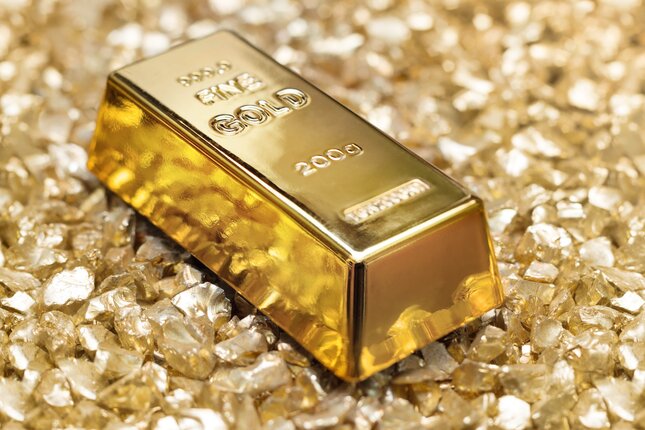Good Bubble, bad Bubble?
Most tv appearing analysts would agree that a bubble market is not only tricky but bad for investment. The narrative for a bubble has been rising; it's now almost a daily event that someone is talking about an overheated market. Whether the Bubble exists is the most common query that I am seeing, then the link to bitcoin, GameStop Corp, Tesla and the technology sector. These investment vehicles are regularly alluded to as Bubble like, and truth be told, they potentially are. But from giant bubbles come significant opportunities.
If we were to historically look at bubble markets throughout history (maybe not tulips), we could find a common theme. They have a bit of pattern.
-
First is the displacement phase; often, rates fall from the graces of normality to ultra-low percentages.
-
Then we move into the boom phase; prices rise slowly then as more and more investors pile into the market, it gains momentum. FOMO takes over, and more and more try to get in on the action.
-
This is where things get a little crazy, the euphoria phase; the brave or stupid throughout the stop losses and proclaim that their chosen market is unstoppable, it gains media attention, more investors pile in. Valuations get to the value of some small countries and sometimes even higher.
-
Fourth, investors in on the action early in the piece start taking the smart money approach; by not picking the top, we start seeing some profit-taking.
-
The final phase is an extension of the fourth with one clear difference, panic. All it takes is one seemingly insignificant event; perhaps Mr Joe Blow decided to take all his profits out for no reason. Someone sees this and thinks, 'I'll do the same'. And its domino's, we have mass hysteria spreading like covid-19, and the media freaks out, asset prices plummet more and more as investors try to liquidate their holdings.
After the Bubble has burst from the ashes, innovation becomes a focal point for cash flows.
While the bubble bursting causes unrivalled fear in some investors wary of being caught in the fallout, it's not all bad. When the Bubble comes, we all want to be a part of it (before we know it is a bubble). Still, this piling style into a particular market creates uneven development in technological advancement. Think of the pandemic, technology stocks with a high degree of specialization focused on using newly acquired funds to further develop the 'work from home' solutions.
These companies, given the opportunity, will put the energy into the product that will provide the higher internal rate of return, with the smallest risk profile. While that was what we needed at the time, the ability to innovate at a social level was left sitting with the lights off. So, to a degree, is the lousy Bubble a good bubble?
It is a weird statement, I know, but hear me out. A bubble bursting promotes the flows of investment into broader categories of innovation and social change. Without bubbles, we would not have had the US expansion of the telegram network, usable roads, or even the evolution of the internet. The idea is that some of the best periods of innovation are derived from the aftermath of a bubble environment. If we can harness the opportunity after the show is over, we stand to be on the next cycle's right side.
Note: All information on this page is subject to change. The use of this website constitutes acceptance of our user agreement. Please read our privacy policy and legal disclaimer. Opinions expressed at FXstreet.com are those of the individual authors and do not necessarily represent the opinion of FXstreet.com or its management. Risk Disclosure: Trading foreign exchange on margin carries a high level of risk, and may not be suitable for all investors. The high degree of leverage can work against you as well as for you. Before deciding to invest in foreign exchange you should carefully consider your investment objectives, level of experience, and risk appetite. The possibility exists that you could sustain a loss of some or all of your initial investment and therefore you should not invest money that you cannot afford to lose. You should be aware of all the risks associated with foreign exchange trading, and seek advice from an independent financial advisor if you have any doubts.
Recommended Content
Editors’ Picks

EUR/USD recovers to 1.0300 as traders await US NFP
EUR/USD has erased losses to trade modestly flat at around 1.0300 in European trading on Friday. However, concerns over US President-elect Trump's policies and hawkish Fed expectations keep the US Dollar afloat ahead of the US Nonfarm Payrolls data, capping the pair's rebound.

GBP/USD bounces back to 1.2300, US NFP eyed
GBP/USD is bouncing back to near 1.2300 after finding fresh demand in the European session on Friday. Despite the rebound, the pair remains vulnerable amid persistent US Dollat strength and the UK bond market turmoil. The focus now shifts to the US labor market data for fresh directives.

Gold price prolongs multi-day-old uptrend, refreshes multi-week top ahead of US NFP
Gold price (XAU/USD) gains some follow-through positive traction for the fourth consecutive day and touches a fresh four-month peak, around the $2,680 region during the first half of the European session on Friday.

Nonfarm Payrolls forecast: US December job gains set to decline sharply from November
US Nonfarm Payrolls are expected to rise by 160K in December after jumping by 227K in November. US jobs data is set to rock the US Dollar after hawkish Fed Minutes published on Wednesday.

How to trade NFP, one of the most volatile events Premium
NFP is the acronym for Nonfarm Payrolls, arguably the most important economic data release in the world. The indicator, which provides a comprehensive snapshot of the health of the US labor market, is typically published on the first Friday of each month.

Best Forex Brokers with Low Spreads
VERIFIED Low spreads are crucial for reducing trading costs. Explore top Forex brokers offering competitive spreads and high leverage. Compare options for EUR/USD, GBP/USD, USD/JPY, and Gold.